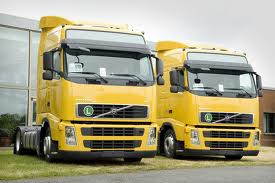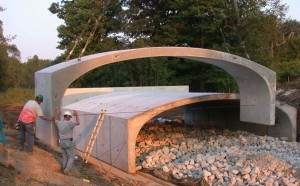 It is always difficult to come up with a top five list of almost anything but I will try to create top five reading lists covering the books on each category in infrastructures. This first list covers the introductory materials, the most basic books on infrastructures, the systems and technologies of the structures of civilization. This list isn’t meant to create argument or controversy (not that lists of books about infrastructure are the subject of too many violent confrontations) but rather act as a guide to getting your feet wet, so to speak.
It is always difficult to come up with a top five list of almost anything but I will try to create top five reading lists covering the books on each category in infrastructures. This first list covers the introductory materials, the most basic books on infrastructures, the systems and technologies of the structures of civilization. This list isn’t meant to create argument or controversy (not that lists of books about infrastructure are the subject of too many violent confrontations) but rather act as a guide to getting your feet wet, so to speak.
The Works: Anatomy of the City, by Kate Ascher digs deep into the guts of New York City using clearly written text, pictures, maps and other graphic descriptions of structures and processes that keep New York City running. The Works is also written for designers and architects. Ascher uses descriptions to identify the sometimes dense graphics and drawings and then uses information graphics and maps to illustrate some of the more unique concepts found in the infrastructures of one of the worlds largest and busiest cities. While the book is mainly about New York the systems described here are found everywhere. By using the term anatomy she clearly and accurately describes the way the book dissects a major city. It is a wonderful book that you can turn back to over and over again, digging into its examples and unearthing wonderful resources.
Too Big to Fall: America’s Failing Infrastructure and the Way Forward, by Barry LePatner is it a polemic, part rant and part reasoned argument about the difficulty facing many communities with deteriorating infrastructure. Whether you agree with his arguments is almost beside the point. Too big to fall is an excellent book underlining the need for infrastructure improvement, maintenance and investment not just in bridges and roads but across the spectrum. LePatner makes a compelling argument for how the United States transportation network has become a liability to ongoing transportation and commercial activity because of the many failures and structural problems caused by lack of investment and long-term neglect. The book dwells on the neglect and bad planning but also does a very good job of explaining the road networks, bridges and structural systems that make up transportation infrastructure. The books material argument is a solid case and LePatner cites legal and design engineering evidence in a powerful set of examples that will lead you to draw conclusion that this is a major problem which is not going to go away anytime soon.
Infrastructures: A Field Guide is one of the best general books on the subject. It has a broad coverage and is well written. Infrastructure is a glossy, general book on the different technologies and systems that make up modern infrastructure. Written by Brian Hayes Infrastructure is a field guide to industrial and modern technological landscapes. One of its striking features are the wonderful photographs of one or two on every page of infrastructure systems, industrial sites, cities and the landscapes created by infrastructure developments. Hayes writes clear descriptions of the systems that keep the modern world running, including energy production, shipping, transportation, agriculture and the various varied methods of managing the waste we create.
The Landscape of Contemporary Infrastructure, by Shannon and Smets,investigates how design determines the organization and flow of the infrastructures in cities and towns. The design and organization for structure features, the placement of structures and the use of the systems over time contributes to the character of cities. These issues are explored in four dense chapters that lay out the different approaches by different designers and architects. Each chapter outlines projects from some of the world’s important designer/developers including Arata Isozaki, Paul Andreu, Xaveer De Geyter, Jean Nouvel and Ricardo Bofill. The book is a textbook and suffers from some fairly dense prose, but it is one of the best new books on urban design and the problems of development that confront modern infrastructure.
Engineering the City: How Infrastructure Works by Levy and Panchyk, might strike some people as a children’s book but it is actually an excellent introduction to the different systems and structures that are required for human civilization. beginning with water and land use the authors use simple line drawings, creative descriptions, examples and cogent prose to unravel the many different systems and structures required to create cities and keep them running.
In no way is this meant to be a definitive list of the only books that cover infrastructure in a general way. These are, in my opinion, the best books to get you started in understanding the issues and problems of modern infrastructure.
 The Economist science and technology blog “Babbage” ran an article on the development of new technologies being developed for the long haul trucking industry. A company in South Carolina called Smart Truck has designed a system that draws in air from under the trailer of a truck and uses it to create airflow in the rear of the truck. This makes the trucks more aerodynamic and saves fuel.
The Economist science and technology blog “Babbage” ran an article on the development of new technologies being developed for the long haul trucking industry. A company in South Carolina called Smart Truck has designed a system that draws in air from under the trailer of a truck and uses it to create airflow in the rear of the truck. This makes the trucks more aerodynamic and saves fuel.

